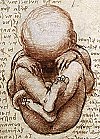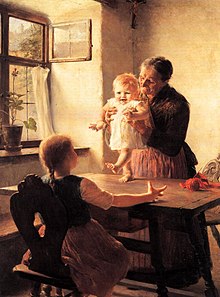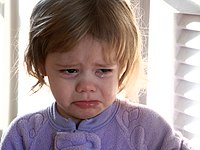
Developmental psychology is the scientific study of how and why humans grow, change, and adapt across the course of their lives. Originally concerned with infants and children, the field has expanded to include adolescence, adult development, aging, and the entire lifespan. Developmental psychologists aim to explain how thinking, feeling, and behaviors change throughout life. This field examines change across three major dimensions, which are physical development, cognitive development, and social emotional development. Within these three dimensions are a broad range of topics including motor skills, executive functions, moral understanding, language acquisition, social change, personality, emotional development, self-concept, and identity formation.

Parenting or child rearing promotes and supports the physical, emotional, social, spiritual and cognitive development of a child from infancy to adulthood. Parenting refers to the intricacies of raising a child and not exclusively for a biological relationship.

Baby sign language is the use of manual signing allowing infants and toddlers to communicate emotions, desires, and objects prior to spoken language development. With guidance and encouragement, signing develops from a natural stage in infant development known as gesture. These gestures are taught in conjunction with speech to hearing children, and are not the same as a sign language. Some common benefits that have been found through the use of baby sign programs include an increased parent-child bond and communication, decreased frustration, and improved self-esteem for both the parent and child. Researchers have found that baby sign neither benefits nor harms the language development of infants. Promotional products and ease of information access have increased the attention that baby sign receives, making it pertinent that caregivers become educated before making the decision to use baby sign.
A language delay is a language disorder in which a child fails to develop language abilities at the usual age-appropriate period in their developmental timetable. It is most commonly seen in children ages two to seven years-old and can continue into adulthood. The reported prevalence of language delay ranges from 2.3 to 19 percent.
Language development in humans is a process which starts early in life. Infants start without knowing a language, yet by 10 months, babies can distinguish speech sounds and engage in babbling. Some research has shown that the earliest learning begins in utero when the fetus starts to recognize the sounds and speech patterns of its mother's voice and differentiate them from other sounds after birth.
A delayed milestone, which is also known as a developmental delay, refers to a situation where a child does not reach a particular developmental milestone at the expected age. Developmental milestones refer to a collection of indicators that a child is anticipated to reach as they grow older.
Child development stages are the theoretical milestones of child development, some of which are asserted in nativist theories. This article discusses the most widely accepted developmental stages in children. There exists a wide variation in terms of what is considered "normal", caused by variations in genetic, cognitive, physical, family, cultural, nutritional, educational, and environmental factors. Many children reach some or most of these milestones at different times from the norm.

Gross motor skills are the abilities usually acquired during childhood as part of a child's motor learning. By the time they reach two years of age, almost all children are able to stand up, walk and run, walk up stairs, etc. These skills are built upon, improved and better controlled throughout early childhood, and continue in refinement throughout most of the individual's years of development into adulthood. These gross movements come from large muscle groups and whole body movement. These skills develop in a head-to-toe order. The children will typically learn head control, trunk stability, and then standing up and walking. It is shown that children exposed to outdoor play time activities will develop better gross motor skills.
Research on the heritability of IQ inquires into the degree of variation in IQ within a population that is due to genetic variation between individuals in that population. There has been significant controversy in the academic community about the heritability of IQ since research on the issue began in the late nineteenth century. Intelligence in the normal range is a polygenic trait, meaning that it is influenced by more than one gene, and in the case of intelligence at least 500 genes. Further, explaining the similarity in IQ of closely related persons requires careful study because environmental factors may be correlated with genetic factors.
The study of height and intelligence examines correlations between human height and human intelligence. Some epidemiological research on the subject has shown that there is a small but statistically significant positive correlation between height and intelligence after controlling for socioeconomic class and parental education. The cited study, however, does not draw any conclusions about height and intelligence, but rather suggests "a continuing effect of post-natal growth on childhood cognition beyond the age of 9 years." This correlation arises in both the developed and developing world and persists across age groups. An individual's taller stature has been attributed to higher economic status, which often translates to a higher quality of nutrition. This correlation, however, can be inverted to characterize one's socioeconomic status as a consequence of stature, where shorter stature can attract discrimination that affects many factors, among them employment, and treatment by educators. One such theory argues that since height strongly correlates with white and gray matter volume, it may act as a biomarker for cerebral development which itself mediates intelligence. Competing explanations include that certain genetic factors may influence both height and intelligence, or that both height and intelligence may be affected in similar ways by adverse environmental exposures during development. Measurements of the total surface area and mean thickness of the cortical grey matter using a magnetic resonance imaging (MRI) revealed that the height of individuals had a positive correlation with the total cortical surface area. This supports the idea that genes that influence height also influence total surface area of the brain, which in turn influences intelligence, resulting in the correlation. Other explanations further qualify the positive correlation between height and intelligence, suggesting that because the correlation becomes weaker with higher socioeconomic class and education level, environmental factors could partially override any genetic factors affecting both characteristics.
Health can affect intelligence in various ways. Conversely, intelligence can affect health. Health effects on intelligence have been described as being among the most important factors in the origins of human group differences in IQ test scores and other measures of cognitive ability. Several factors can lead to significant cognitive impairment, particularly if they occur during pregnancy and childhood when the brain is growing and the blood–brain barrier of the child is less effective. Such impairment may sometimes be permanent, sometimes be partially or wholly compensated for by later growth.
The Bayley Scales of Infant and Toddler Development is a standard series of measurements originally developed by psychologist Nancy Bayley used primarily to assess the development of infants and toddlers, ages 1–42 months. This measure consists of a series of developmental play tasks and takes between 45 – 60 minutes to administer and derives a developmental quotient (DQ) rather than an intelligence quotient (IQ). Raw scores of successfully completed items are converted to scale scores and to composite scores. These scores are used to determine the child's performance compared with norms taken from typically developing children of their age. The Bayley-III has three main subtests; the Cognitive Scale, which includes items such as attention to familiar and unfamiliar objects, looking for a fallen object, and pretend play, the Language Scale, which taps understanding and expression of language, for example, recognition of objects and people, following directions, and naming objects and pictures, and the Motor Scale, which assesses gross and fine motor skills such as grasping, sitting, stacking blocks, and climbing stairs. There are two additional Bayley-II Scales depend on parental report, including the Social-Emotional scale, which asks caregivers about such behaviors as ease of calming, social responsiveness, and imitation play, and the Adaptive Behavior scale which asks about adaptions to the demands of daily life, including communication, self-control, following rules, and getting along with others. The Bayley-III Cognitive and Language scales are good predictors of preschool mental test performance. These scores are largely used for screening, helping to identify the need for further observation and intervention, as infants who score very low are at risk for future developmental problems.

Child development involves the biological, psychological and emotional changes that occur in human beings between birth and the conclusion of adolescence.
Environment and intelligence research investigates the impact of environment on intelligence. This is one of the most important factors in understanding human group differences in IQ test scores and other measures of cognitive ability. It is estimated that genes contribute about 20–40% of the variance in intelligence in childhood and about 80% in adulthood. Thus the environment and its interaction with genes account for a high proportion of the variation in intelligence seen in groups of young children, and for a small proportion of the variation observed in groups of mature adults. Historically, there has been great interest in the field of intelligence research to determine environmental influences on the development of cognitive functioning, in particular, fluid intelligence, as defined by its stabilization at 16 years of age. Despite the fact that intelligence stabilizes in early adulthood it is thought that genetic factors come to play more of a role in our intelligence during middle and old age and that the importance of the environment dissipates.
Cognitive epidemiology is a field of research that examines the associations between intelligence test scores and health, more specifically morbidity and mortality. Typically, test scores are obtained at an early age, and compared to later morbidity and mortality. In addition to exploring and establishing these associations, cognitive epidemiology seeks to understand causal relationships between intelligence and health outcomes. Researchers in the field argue that intelligence measured at an early age is an important predictor of later health and mortality differences.
The development of memory is a lifelong process that continues through adulthood. Development etymologically refers to a progressive unfolding. Memory development tends to focus on periods of infancy, toddlers, children, and adolescents, yet the developmental progression of memory in adults and older adults is also circumscribed under the umbrella of memory development.
Fine motor skill is the coordination of small muscles in movement with the eyes, hands and fingers. The complex levels of manual dexterity that humans exhibit can be related to the nervous system. Fine motor skills aid in the growth of intelligence and develop continuously throughout the stages of human development.

Maternal sensitivity is a mother's ability to perceive and infer the meaning behind her infant's behavioural signals, and to respond to them promptly and appropriately. Maternal sensitivity affects child development at all stages through life, from infancy, all the way to adulthood. In general, more sensitive mothers have healthier, more socially and cognitively developed children than those who are not as sensitive. Also, maternal sensitivity has been found to affect the person psychologically even as an adult. Adults who experienced high maternal sensitivity during their childhood were found to be more secure than those who experienced less sensitive mothers. Once the adult becomes a parent themselves, their own understanding of maternal sensitivity will affect their own children's development. Some research suggests that adult mothers display more maternal sensitivity than adolescent mothers who may in turn have children with a lower IQ and reading level than children of adult mothers.
Separation anxiety disorder (SAD) is an anxiety disorder in which an individual experiences excessive anxiety regarding separation from home and/or from people to whom the individual has a strong emotional attachment. Separation anxiety is a natural part of the developmental process. It is most common in infants and little children, typically between the ages of six to seven months to three years, although it may pathologically manifest itself in older children, adolescents and adults. Unlike SAD, normal separation anxiety indicates healthy advancements in a child's cognitive maturation and should not be considered a developing behavioral problem.

Early childhood development is the period of rapid physical, psychological and social growth and change that begins before birth and extends into early childhood. While early childhood is not well defined, one source asserts that the early years begin in utero and last until 3 years of age.










